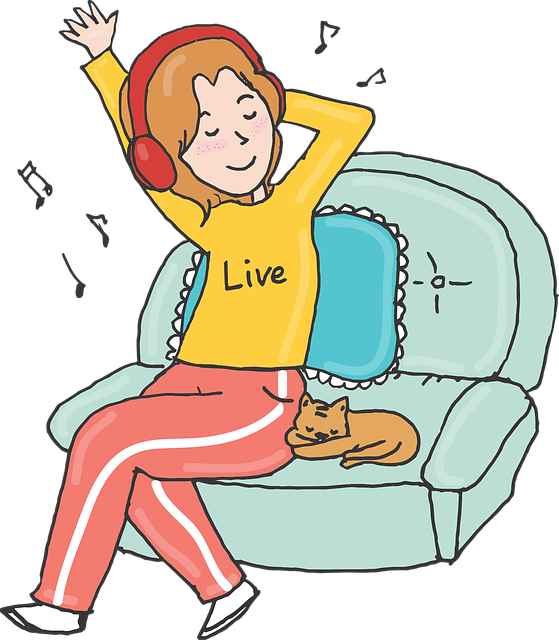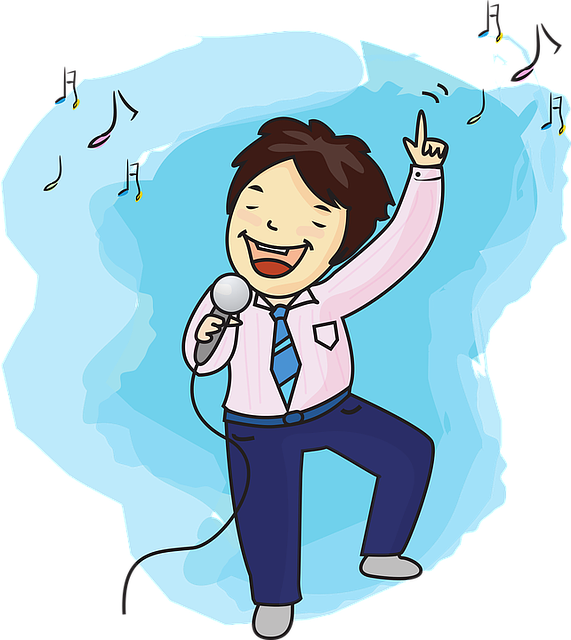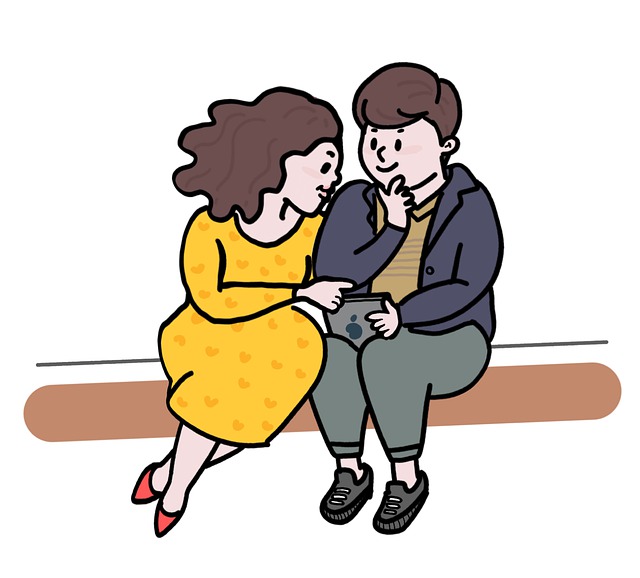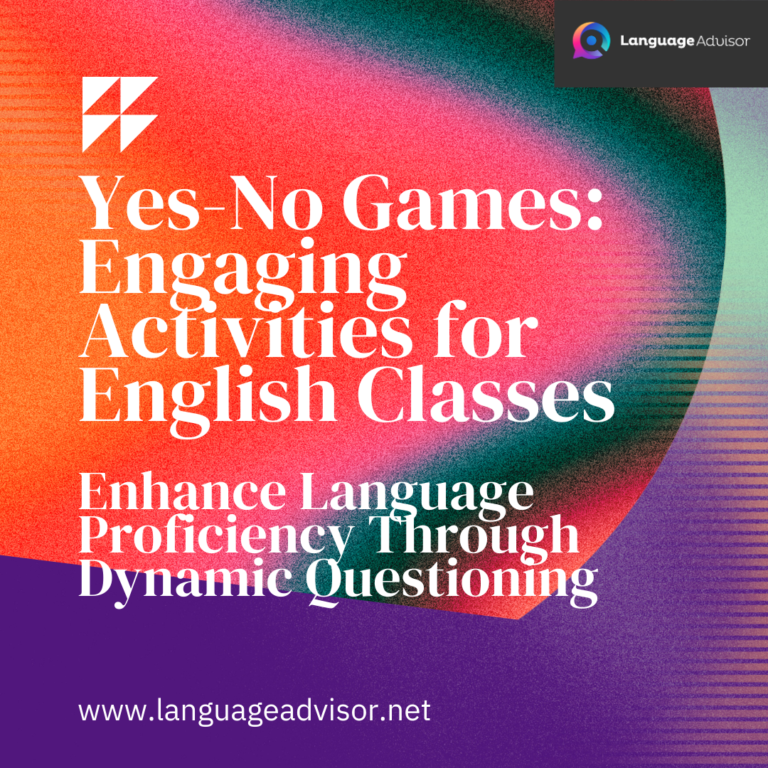24 Ice Breakers and Warm-Up Activities. Communicative Activities and Games for Learning
24 Ice Breakers and Warm-Up Activities

24 Ice Breakers and Warm-Up Activities
24 Ice Breakers and Warm-Up Activities. Coming from a variety of teacher resource books, the activities listed in these pages are designed to foster communication through high-interest and motivational tasks. Each of these activities provides the crucial opportunity for practice that is so essential to the successful acquisition of a foreign language.

I am wearing…
Give each student a slip of paper. On the board write the beginning of the sentence: “I am wearing…” ask the students to complete the sentence on their paper. Point to your clothes and give them an example – I am wearing a red dress.
Collect all slips of paper and put them in a bag. Have each student reach into the bag and retrieve a slip of paper. Instruct students to walk around the room and find the person who wrote the sentence. Once they have found that person, have them ask a few questions, e.g. What is your name? What is your favorite color? How long have you been studying English?, etc.
Draw the class back together and then walk up to one of the students and ask – who is this gentleman? Who interviewed him? What is his name, etc. Then repeat the name of the student, welcome him to the class and go to someone else – moving around the class in a random fashion asking, who is this lovely lady?, who is this girl with the beautiful smile, pretty hair, green blouse, brown eyes, etc.
After you are introduced to each person, welcome them and repeat their name and the names of the people you have already met.
This lowers students’ anxiety as they become interested to see if you can remember all of their names as you repeat each one.

Toss-A-Name
Standing in a circle, the teacher introduces the game by saying
her first name and something that she enjoys. She then tosses a soft object to the person on her left. Continuing in one direction, each person says his/her first name and something he/she enjoys, and continues tossing the ball in sequence until the leader again has the ball. The leader then calls out someone’s name in the circle and throws the ball to him/her at the same time saying what that person enjoys. That person then calls out another individual’s name and what that person enjoys, etc.
Variation = Have students introduce their names and one adjective to describe themselves. Then when tossing the ball the person throwing it would call out the name and adjective as he/she throws it to the corresponding student, and the student catching it would then call out his/her name. If the wrong name or adjective was called, the student catching the ball would restate his name, adjective, etc.
from Silver Bullets by Karl Rohnke
Variation = Mime a Hobby
Standing in a circle, the teachers introduces the game by saying his first name and something that he enjoys doing (I’m Lesley and I like [mimes reading] and everyone calls out what she is miming “reading”). The next person says his name and mimes something he enjoys doing, the whole group shouts out what is being mimed, then as a group they say “Lesley likes reading, Bob likes playing golf” and it continues on in this way.
The great thing about this approach is that everyone is speaking all the way through the activity, all names are reinforced by everyone in the group.
From Johnny Saldana, Arizona State University
24 Ice Breakers and Warm-Up Activities

Alphabetical Mixer
Tell students that they are to sit in the alphabetical order of their first names. Show them where “A” should sit and indicate the end of the seating arrangement where “Z” should sit. Participants will move about asking each other their first names and arranging themselves accordingly. After everyone is seated, go around the room (circle, etc.) asking each person to say their first name, confirming the order and reinforcing names, as everyone in the class repeats the names in unison – Alex, Bonnie, Carmen …
Variations: You can use this at random times to mix-up the classroom seating, to get people talking and create energy.
Ask students to sit alphabetically by their last names, the first name of the person who is most important to them, the first name of their mother, their best friend, their pet, the name of the street they live on, the name of the city they were born in, etc.
From 101 Communicative Games for the English Classroom by Cyndi Turtledove

Mystery Name Tags
Have students fold papers into squares. (The actual number of squares that you choose will vary depending upon the students’ ability level. This activity can be used with novice learners using only 2 squares, or with advanced students with 8 or more squares).
Write the information on the board that you would like them to share in each square. For example: 1. Draw a picture of your family; 2. Write the initial of someone who is important to you; 3. Draw a picture of your favorite place; 4. Draw a picture of something you enjoy doing; 5. Write the initial of someone you admire; 6. Draw a picture of something you hope to be doing in 10 years, etc.
Students then circulate around the room with their tags and they find a partner and share information. Try to have them meet and share their name tags with as many people as possible in a specific time frame. Then debrief the experience as a whole class.
From Keep Talking by Friederike Klippel
24 Ice Breakers and Warm-Up Activities

The Name Game
This is a rhythmic game with four beats. It is best if students are seated or standing in a circle; it can be done from class seats as long as everyone can see each other. On the first beat, everyone slaps both of their hands on their thighs. On the second beat, everyone claps both hands together. On the third and fourth beats, everyone snaps the thumb and fingers of first one hand and then the other.
Say nothing on the first two beats. Say your own name on the third beat. Say someone else’s name on the fourth beat.
That person must then say his/her own name on the third beat, someone else’s name on the fourth and so on. e.g. Slap, clap, Lesley, Paula…Slap, clap, Paula, Maria…
From 101 Communicative Games for the English Classroom by Cyndi Turtledove

Trademark/Coat of Arms
Each student is given a transparency and pens.
Students are asked to draw “trademarks” or “coats of arms” for themselves that tell something about them. Students pair up to share their trademarks. Student volunteers can come up to the OHP and explain their trademark to the group while others ask questions.
Variation: Collect trademarks and put them on the OHP as students try to determine whose trademark it might be. It can be used for purposes of introduction, or for learning more about each other after the students have been in class together for a while.
The trademark idea has been especially successful with business students.
From Keep Talking by Friederike Klippel

Greetings and Introductions
Everyone moves around the room meeting everyone else.
As student A meets student B he/she says “Hello, I’m _____” Student B says, “How do you do _______, my name is _______” Student A says “It’s nice to meet you.” Then student C comes up and student A introduces himself/herself to student C and vice versa. Then Student A says “student C, I’d like you to meet student B” and continue on in this way until everyone in the class has introduced themselves and someone else.
You can make it competitive by setting a timer and giving points for the student who meets and introduces the most people to others before the timer goes off.
From 101 Communicative Games for the English Classroom by Cyndi Turtledove
24 Ice Breakers and Warm-Up Activities

Mix-Freeze-Pair
Students are told to walk around the classroom at random until the teacher calls “Freeze!” and everyone stops in place. The teacher next calls out “Pair!” and students form pairs with the person closest to them. Now in pairs they interview each other on a topic suggested by the teacher. Some ideas for topics: Pets I’ve had; Books I enjoy; A fun vacation I went on: A place I’d like to visit, etc.
Variation: Number questions
Students walk around randomly until the teacher calls “Freeze!” Then the teacher calls out a question, e.g. “how many syllables are there in the word election? Students then get into groups of 3 as the answer is 3 syllables. Any extra students go to a place designated as lost and found. Students can’t go to lost and found twice in a row, so on the next question, classmates make sure to group with the lost and found students first. Other kinds of questions: e.g. how many days in the week?, how many months are there that begin with “m”, if you’re reading a story in a literature class you can ask questions about the characters or story, etc.
From Cooperative Learning by Dr.Spencer Kagan

Super Bingo
Ask the students to write the following on a piece of paper:
1. List 4 kinds of food that you like;
2. List 4 places that you have visited;
3. List 4 things that you enjoy doing (hobbies/sports/passions);
4. List 4 movies that you have seen.
Next give each student a bingo card and ask them to randomly place their listed items on the bingo card (they cannot have a row of 4 that has all of the same topic items in it!)
Have students walk around the room and ask the necessary questions [Do you like…? Have you visited…? Do you enjoy/like …? Have you seen…?] to find people who share their tastes/interests/experiences (THEY ARE NOT LOOKING FOR SOMEONE WHO HAS WRITTEN THE SAME THING ON HIS/HER CARD, ONLY LOOKING FOR COMMON TASTES/INTERESTS/EXPERIENCES).
When students find a match, they cross out that blank of their bingo card and write in the name of the person that they found. e.g. I might ask “Have you visited New York?” answer is “Yes, I have.”
Then I ask “What is your name?” response is “Alfred” (So I cross out New York on my bingo card and write in Alfred’s name)
The first student to get four names in a row calls out “BINGO!” and wins the game.
From New Ways in Teaching Grammar by Martha Pennington, ed.

Something in Common
Have students number their papers for the number of students in the class (excluding themselves).
At the top of the paper they write the sentence starters: We both ….; Neither of us… Tell them that they have a set period of time (10-30 minutes depending on the size of the class) to walk around the room, talk to their classmates and discover something that they have in common.
Show by example by asking a student “Nancy, do you have a sister?” when Nancy answers yes you say “So do I, we have that in common,” then write on your paper “Nancy” and beside her name you might write the full sentence “We both have a sister” or you might just write the word ‘sister’ depending upon the ability level of the students.
You can use the idea of writing complete sentences as an extension activity after the initial activity is finished. Students may only have something in common with one person, in other words I can’t then ask “Tom, do you have a sister?”, I have to ask something different such as, “do you like coffee”, “have you been to France,” etc. If I talk to Fred and I ask him if he likes football and he says no and I say neither do I, Fred and I both write down the same thing on our paper, I put his name “Fred” and the words “neither of us likes football”, he puts down my name “Lesley” and the same sentence. He does not have to ask me something else to find something in common, just one thing per pair of people. This is a wonderful variation on an old standard game “Find Someone Who…” but it is an improvement as it encourages students to use their own language and to initiate ideas and conversation.
It is especially effective as a warm-up activity for intermediate and above.
From Fun with Grammar by Suzanne W. Woodward
24 Ice Breakers and Warm-Up Activities

Life Lines
Give each student an 8 ½” x 11” piece of paper and markers.
Instruct students to draw a “life line”, a graph of their lives to the present, or a projected life line (especially good for younger students who may not feel that they have enough to say about their lives to date), or the life lines can contain both past and projected future. Then have students circulate around the room looking at each other’s charts/discussing their life lines with as many people as possible.
From Interactive Techniques for the ESL Classroom by Connie and F. Floyd Shoemaker

Interaction Lines
The teacher asks students to line up in the classroom according to a variety of criteria, e.g. alphabetical order of their first names, their birthdates, according to how far away they were born from where they are now, how long they have been studying English, the time they got up in the morning, etc. Students talk to each other, find their place in line and explain their position when asked by the teacher.
From Look Who’s Talking by M.A. Christison and S. Bassano

Choosing Sides
Teacher poses two opposite stances.
Students choose the side
that best matches their own interests, feelings, and opinions, moving to that side of the room. e.g. (preference) Do you prefer dogs or cats? Watching sports or playing sports? A small sports car or a luxury sedan? A day in the mountains or a day at the beach?
Variation: The continuum
Teacher poses two strong, polarized opinions on an issue.
One stance is located at one end of the room, the other stance at the opposite end. An imaginary line continuum runs from one position to the other. A mark is made in the middle of the room. Students must choose a place along the line to indicate their personal stance on the issue. Students talk to the people who are standing close to them and switch relative positions as necessary.
When all are standing in the spot they feel best reflects their personal position, volunteers state why they chose their particular location on the continuum. e.g. all students (8-18) should be required to wear uniforms/All students should be free to express themselves and wear anything they want to school; Smoking should be banned in public/People should be free to smoke, etc.
From the Values Clarification Handbook by S. Simon

Exchange Tags
Give students name tags and ask them to print their names. Students introduce themselves to someone in the class as they walk about the room. (You may want to put a list of suggested questions on the board to stimulate the students’ conversations – e.g. where do you live; what is your favorite food, place, music, type of movie; what are your hobbies; tell me about your family; what are your most proud of; what is your future goal, etc.)
Encourage students to talk for about 2 minutes, then ring a bell or call time and have students go on to meet to another student. Before moving on, students exchange name tags, then go on to introduce themselves to other people using the information that they have learned about the person they just spoke to “I’m Jorge and I am from Mexico. I have 6 brothers and sisters, etc.” Or they can say “Let me tell you about Jorge” Call time again and have participants switch name tags again and continue on in this way until all students have had a chance to meet many new people.
From Interactive Techniques for the ESL Classroom by Connie and F. Floyd Shoemaker
24 Ice Breakers and Warm-Up Activities

Dictation Interviews
Teacher dictates 6 interview questions. (After the students have taken the dictation, the teacher can put a transparency on the OHP that shows the sentences. The students can then correct any mistakes they may have made). The students then turn to a partner and interview each other using these questions. After 10 minutes or so (depending on ability of students), the students can introduce their partner telling something they learned about that person. Students then trade papers and use the notes to write a page about that person.
From Dictation by M. Rinvolucri and P. Davis

Headlines
Tell students: “There is a weekly newspaper about you and only you. What is this week’s headline?” Students create and share personal headlines. This can be used as a cue for a short, personalized writing task.
From The Recipe Book: Practical Ideas for the Language Classroom by S. Lindstromberg

Draw and Describe
Teacher poses a topic or asks a question. Students have five minutes to make a picture of the answer and label their pictures. They share their pictures orally in groups, asking one another for more details. Students write about their drawings. (Possible topics: Draw your best friend, your house or your dream house, a job you would like to have, a place you have been or would like to go on vacation, something you want to buy, an activity your really enjoy, etc.)
From Drawing Out by S. Bassano and M.A. Christison

Jigsaw Puzzle Search
Use small puzzles (10-20 pieces). Divide the class into
4 teams of 4 or 5 people (more teams if you have a larger class).
Give each student a piece of the puzzle his/her team is going to put together. Take the balance of the puzzle pieces and mix them all up together in the middle of your desk. Teams send one member at a time up to your desk to select another puzzle piece to help put theirs together. After member 1 comes up, then it’s member 2 and so on until one of the teams puts together the whole puzzle (students may only take one piece at a time back to their table).
This is primarily an exercise to develop group cooperation and team cohesion and is especially good for low-level students as there is a limited amount of language required and they find that they can successfully accomplish their goal through visual cues. Language use can be increased for higher level groups by dividing all of the puzzle pieces between the 4 groups and having students go to other tables to find the pieces that they need, to ask for what they want, to negotiate exchanges, etc.
From Interactive Techniques for the ESL Classroom by Connie and F. Floyd Shoemaker

Mood Thermometer
Teacher draws a large thermometer from the top of the chalkboard to the bottom, happy face at the top, sad face at the bottom. Students come up all at one time and sign their names on the thermometer to indicate how they are feeling today. Teachers asks class what they notice about the “temperature” in the room today. The teacher may or may not read the names out loud, it’s a good idea to ask the students if they would like to say why they placed their names where they did. What are they feeling good about? or, What’s the problem? Oral sharing by volunteers only, but all can write a few lines about how they feel today and why – in journals, etc.
From Look Who’s Talking by M.A. Christison and S. Bassano
24 Ice Breakers and Warm-Up Activities

Back to Back
While music is playing or a teacher is clapping everyone is instructed to walk around the room observing other people’s clothes, hairstyle, etc. When the music stops, each student pairs up and they stand back to back. Taking turns, each of them makes statements about the other’s appearances, e.g. Student A: “I think you’re wearing blue jeans.” Student B: “That’s not right. My pants are blue, but they aren’t jeans,” etc. The teacher starts the music again and all the partners separate.
When the music stops the procedure is repeated with a new partner. This is a particularly successful exercise for reinforcing knowledge of clothing and color vocabulary.
From Keep Talking by Friederike Klippel

Nonverbal Introductions
Have students get into pairs. Tell students that the purpose of this exercise is to introduce oneself to a partner WITHOUT using any words. They may use gestures, signals, visuals, pictures or anything nonverbal (as the teacher you must decide whether students can write information, and if so, how much). The instructor should demonstrate first such as pointing to a wedding ring, demonstrating a tennis swing, showing pictures of family, etc.
After students “non-talk” with their partners, they can introduce their partner to the class.
From Interactive Techniques for the ESL Classroom by Connie and F. Floyd Shoemaker

Left/right/all mixed-up
Students form a circle with their chairs. The teacher stands in the middle, points to one student and asks “who are your neighbors?” The student then turns to the student sitting to his/her left and asks “what is your name?”, then turns to the student to the right and asks the same question. The student then reports to the teacher, “this is Ellen and this is Sam.” The teacher then asks “how’s Sam feeling today?” and the student responds “He’s alright” or “He feels left out” or “He’s all mixed-up” If the student says “He’s alright” everyone gets up and quickly moves to the chair to their right (students must stand up fully, no sliding over on the seat!); if the student says “He feels left out,” the students all move to the left; and if the student says “He’s all mixed-up” everyone runs across the circle to take another chair. Whoever is left without a chair goes to the middle of the circle and begins the questioning again.
From Elementary Teacher’s Handbook of Indoor and Outdoor Games by Art Kamiya

Stop and Talk
The class forms a double circle, half the students in an inner circle facing out, half in an outer circle facing in. On signal from the teacher, or when music is started, the inner circle begins walking counterclockwise, while the outer circle moves clockwise. The teacher then stops the music or calls for the students to stop and each person then introduces him/herself to the person he/she faces. Each time the group stops, the teacher announces a different topic of conversation/question for discussion (players should continue to introduce themselves to each new person they encounter). Topics/questions could be: what did you do last weekend?, what is your favorite color?, what kind of movies do you like?, what is your favorite kind of music?, what would you do if you had a million dollars?, etc…
From Social Games for Recreation by Borst-Mitchell

Ask Me about Me
Each student is given an index card. They are to write a complete sentence about their family; a complete sentence about a hobby they enjoy; and a complete sentence about their favorite food. (All of these sentences are working on the present tense – this activity can be modified to require students to use adjectives to describe their favorite place, object, person, etc. It can also be made more challenging by requiring the students to write sentences in other tenses.
The topics to be written about, and whether you are asking the students to write a few words, a complete sentence or a brief paragraph, can all be adapted to suit the needs and abilities of the learners in your class).
The students do not put their names on their cards. All of the cards are collected, shuffled by the teacher and redistributed to the class. Students look at the cards that they have received (making sure that they did not get their own back), then think of questions that they must ask to find the person whose card they hold.
You can require them to write their questions (if it is a writing or grammar lesson), or simply to ask their questions (if speaking and listening skills are your focus for this activity).
Students then walk around the class asking questions until they find the match with the card. When a match is found they return the card to that student.
As a debriefing activity, you can ask students to introduce the person that they found, telling something about that person and telling the class what question they asked to find them.
From The Resourceful English Teacher by Chandler & Stone

24 Ice Breakers and Warm-Up Activities
24 Ice Breakers and Warm-Up Activities. Also check out these ice breakers and warm-up activities












